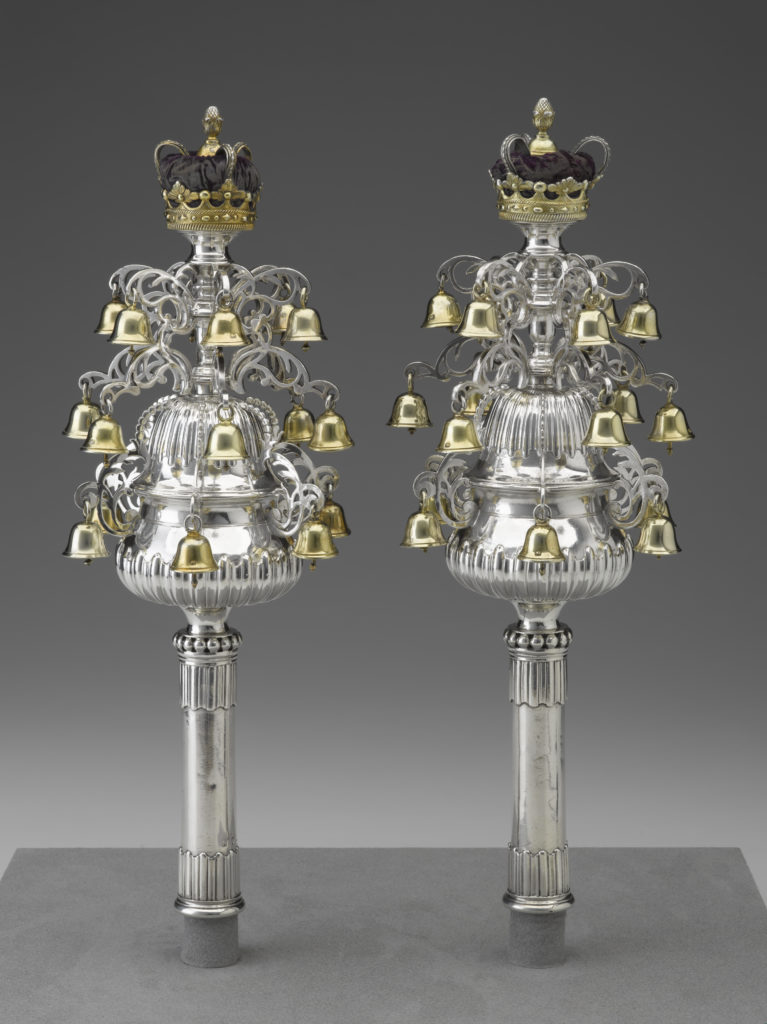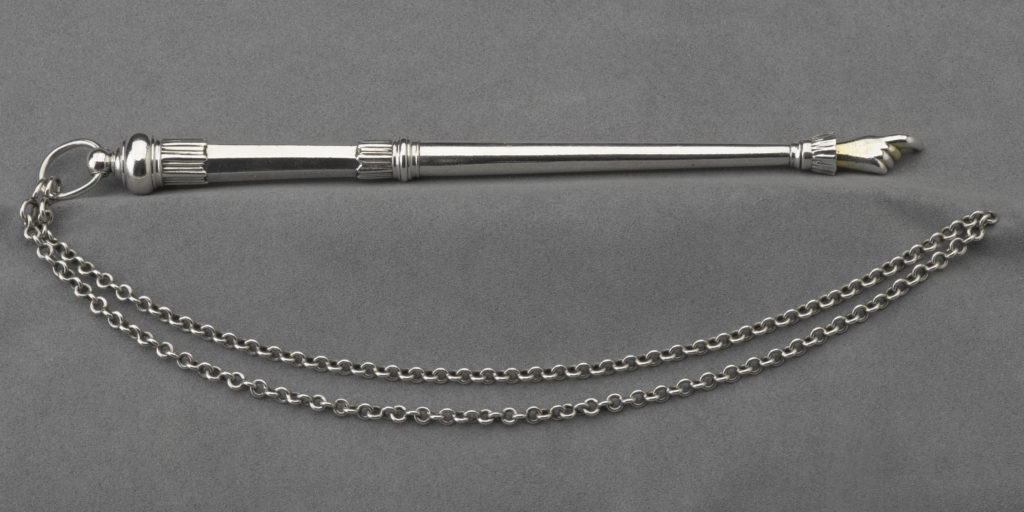Pair of Torah Finials and Pointer (work of art)
Artwork Info
Key Ideas
- The bells on the finials (ribbonim in Hebrew) and parts of the small crowns are gilded. Gilding is a centuries-old technique of covering a surface with a thin layer of gold.
- An English hoop (arch) crown is on top of each finial, symbolizing the sovereignty of the divine word.
- The entire Jewish community of Great Britain was expelled in 1290. Jews were allowed to return in 1656 following the end of the English Civil Wars and Oliver Cromwell’s appointment as Lord Protector in 1653. The Jewish community in the United Kingdom has thrived since its return.
- The bells on Torah finials serve a practical purpose. When the Torah scroll is taken out of the Ark, the scrolls are carried through the sanctuary. It is a custom to follow the scroll, or scrolls, as they are carried. The bells make it possible to hear the scroll (or scrolls) as they are being carried among the congregation and up to the bimah, or reading table.
Learn More
These finials and matching yad, or pointer, were made for the Orthodox Synagogue in Plymouth, England. The Synagogue, which opened in 1762, claims to be “the oldest Ashkenazi (Jews whose ancestors were European) synagogue still in regular use in the English speaking world.” These items reflect the elegance and refined craftsmanship of late 18th-century English silver. They are among the earliest surviving ensembles of English Torah ornaments in the British Isles. The hoop (arch) crown on top of each finial represents the English Crown of St. Edward, a symbol that often appears on Jewish ritual items. St. Edward, or Saint Edward the Confessor, served as “King of the English” from 1042 to 1066. The Crown of St. Edward was traditionally used in the coronation ceremonies for English and British monarchs (kings and queens) as early as the 1200s. The original crown was most likely destroyed when the monarchy was abolished in 1649 during the English Civil Wars.
These Torah finals, commissioned for the Plymouth Synagogue, provided a way for the Jewish community to show their pride as Jews and as British citizens, since the Crown of St. Edward is the cherished centerpiece of the Crown Jewels of the United Kingdom. The keter (symbol of a crown) also refers to the importance of the Torah scroll and the lifelong learning of Jewish texts in Jewish life and ritual.
Unfortunately, due to changing population and economic trends over the synagogue’s more than 250-year history, the Jewish community in Plymouth has decreased and is currently a very small community. This led the synagogue to sell, or auction off, some of its valuable collection of Judaic art objects. The NCMA purchased the finials and pointer when they became available through an auction in 2009.
Additional Resources
Resources for Teachers:
- Read an article about the Robins finials and learn about their journey from the Plymouth Synagogue to the NCMA collection.
- Learn more about the Plymouth Synagogue and why they decided to sell the Robins finials and pointer.
Resources for Students:
- Read an article about different methods of gilding.
- Watch a video to learn about St. Edward’s crown and the Crown Jewels.



